Filter by

Internship at PT MULTI BINTANG INDONESIA TBK Quality Department
- Edition
- -
- ISBN/ISSN
- EP052
- Collation
- 17 p. : ill. ; 30 cm.
- Series Title
- -
- Call Number
- EP FSN-013
- Edition
- -
- ISBN/ISSN
- EP052
- Collation
- 17 p. : ill. ; 30 cm.
- Series Title
- -
- Call Number
- EP FSN-013

Advancing Genetic Engineering Protocols for Protein Expression in Pichia Past…
- Edition
- -
- ISBN/ISSN
- Intern 016-2024
- Collation
- vii, 47 p. : ill. ; 30 cm.
- Series Title
- -
- Call Number
- BM-003
- Edition
- -
- ISBN/ISSN
- Intern 016-2024
- Collation
- vii, 47 p. : ill. ; 30 cm.
- Series Title
- -
- Call Number
- BM-003

Biorisk Assessment in Dengue Serotyping at Infectious Disease and Immunology …
- Edition
- -
- ISBN/ISSN
- Intern 014-2024
- Collation
- ix, 44 p. : ill. ; 30 cm.
- Series Title
- -
- Call Number
- BM-001
- Edition
- -
- ISBN/ISSN
- Intern 014-2024
- Collation
- ix, 44 p. : ill. ; 30 cm.
- Series Title
- -
- Call Number
- BM-001

Culinology : the intersection of culinary art and food science
Machine generated contents note: Foreword Preface: So What the Heck is Culinology(r), Anyway? Acknowledgements Chapter 1: The Business of New Product Development and The Role of the Culinology(r) Professional Chapter 2: The Principles of Food Science Chapter 3: Applying Food Science to Cooking Chapter 4: Protein-Based Foods: Introduction and Red Meats Chapter 5: Protein-Based Foods: Poultry Cha…
- Edition
- -
- ISBN/ISSN
- 9780470481349
- Collation
- xiii, 418 p. : ill. ; 29cm
- Series Title
- -
- Call Number
- 664.07 Cou c

Introductory microbiology lab skills and techniques in food science
- Edition
- -
- ISBN/ISSN
- 9780128216781
- Collation
- xv, 158 p. : ill. : ind. ; 23 cm.
- Series Title
- -
- Call Number
- 664.001579 She i
- Edition
- -
- ISBN/ISSN
- 9780128216781
- Collation
- xv, 158 p. : ill. : ind. ; 23 cm.
- Series Title
- -
- Call Number
- 664.001579 She i

Analysis of Various Types of Water Samples Using Different Quantitative Metho…
"Water is a vital part of the ecosystem. Not only is it significant for human survival and is essential for human health, it is also the main constituent of the earth’s hydrosphere and a crucial element which allows chemical reactions to take place. On the other hand, water is also highly affected by man made pollutants. Illegal and unmonitored waste dumping to water bodies contributes to…
- Edition
- -
- ISBN/ISSN
- -
- Collation
- -
- Series Title
- -
- Call Number
- EP BT020
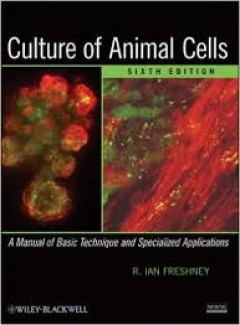
Culture of animal cells : a manual of basic technique and specialized applica…
This authoritative volume offers a complete background related to growth of animal cells in culture. It contains many specialized protocols and advice on how to apply some of the basic protocols to teaching cell culture. Beginning with laboratory design, safety, validation, and bioethics, then continuing with preparation of media, primary culture, and cell lines through to characterization and …
- Edition
- Sixth
- ISBN/ISSN
- 9780470528129
- Collation
- xxxi, 732 p. : ill. : ind. ; 29 cm.
- Series Title
- -
- Call Number
- 571.6381 Fre c
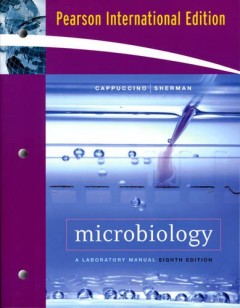
Microbiology : a laboratory manual 8th edition
- Edition
- Eighth edition
- ISBN/ISSN
- 9780321488206
- Collation
- 569 p. : ill. : ind. ; 28 cm.
- Series Title
- -
- Call Number
- 576.076 Cap m
- Edition
- Eighth edition
- ISBN/ISSN
- 9780321488206
- Collation
- 569 p. : ill. : ind. ; 28 cm.
- Series Title
- -
- Call Number
- 576.076 Cap m
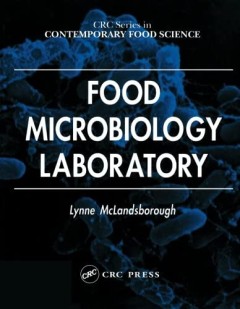
Food microbiology laboratory
- Edition
- -
- ISBN/ISSN
- 9780849312670
- Collation
- 179 p. : ill. : ind. ; 28 cm.
- Series Title
- -
- Call Number
- 664.001579 McL f
- Edition
- -
- ISBN/ISSN
- 9780849312670
- Collation
- 179 p. : ill. : ind. ; 28 cm.
- Series Title
- -
- Call Number
- 664.001579 McL f
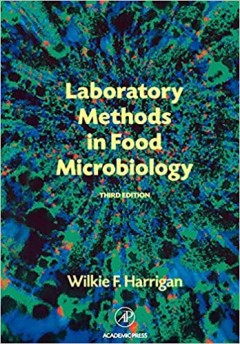
Laboratory methods in food microbiology third edition
- Edition
- Third edition
- ISBN/ISSN
- 9780123260437
- Collation
- xii, 532 p. : ill. : ind. ; 24 cm.
- Series Title
- -
- Call Number
- 664.001579 Har l
- Edition
- Third edition
- ISBN/ISSN
- 9780123260437
- Collation
- xii, 532 p. : ill. : ind. ; 24 cm.
- Series Title
- -
- Call Number
- 664.001579 Har l
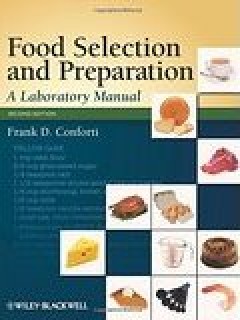
Food selection and preparation : a laboratory manual
Knowledge, skill, and art are the three words to remember when working with foods. They are also the focus of the second edition of Food Selection and Preparation: A Laboratory Manual, which guides students through the fundamentals and basic principles of food preparation, from the recipe to the table, from the raw ingredients to the final product. This manual equips students with a working kn…
- Edition
- Second
- ISBN/ISSN
- 9780813814889
- Collation
- x, 234 p. : ill. ; 28 cm.
- Series Title
- -
- Call Number
- 664 Con f
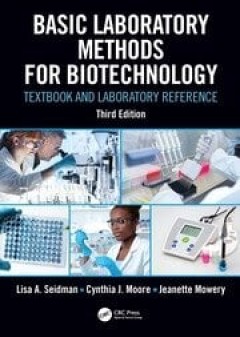
Basic laboratory methods for biotechnology : textbook and laboratory reference
- Edition
- -
- ISBN/ISSN
- 9780367244880
- Collation
- xxvii, 1171 p. : ill. : ind. ; 28 cm.
- Series Title
- -
- Call Number
- 660.6 Sei b
- Edition
- -
- ISBN/ISSN
- 9780367244880
- Collation
- xxvii, 1171 p. : ill. : ind. ; 28 cm.
- Series Title
- -
- Call Number
- 660.6 Sei b
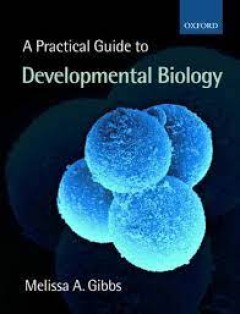
A practical guide to developmental biology
- Edition
- -
- ISBN/ISSN
- 9780199249718
- Collation
- vii, 118 p. : ill. : ind. ; 25 cm.
- Series Title
- -
- Call Number
- 571.8078 Gib p
- Edition
- -
- ISBN/ISSN
- 9780199249718
- Collation
- vii, 118 p. : ill. : ind. ; 25 cm.
- Series Title
- -
- Call Number
- 571.8078 Gib p

Digital transformation of the laboratory : a practical guide to the connected…
- Edition
- -
- ISBN/ISSN
- 9783527347193
- Collation
- xix, 340 p. : ill. : ind. ; 25 cm.
- Series Title
- -
- Call Number
- 616.07 Dig
- Edition
- -
- ISBN/ISSN
- 9783527347193
- Collation
- xix, 340 p. : ill. : ind. ; 25 cm.
- Series Title
- -
- Call Number
- 616.07 Dig
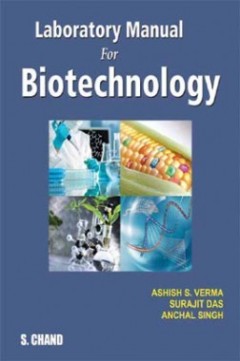
Laboratory manual for biotechnology
- Edition
- -
- ISBN/ISSN
- 9789383746224
- Collation
- xiii, 743 p. : ill. : ind. ; 28 cm.
- Series Title
- -
- Call Number
- 660.6 Ver l
- Edition
- -
- ISBN/ISSN
- 9789383746224
- Collation
- xiii, 743 p. : ill. : ind. ; 28 cm.
- Series Title
- -
- Call Number
- 660.6 Ver l
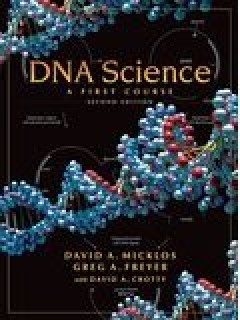
DNA science : a first course
This is the second edition of a highly successful textbook (over 50,000 copies sold) in which a highly illustrated, narrative text is combined with easytouse thoroughly reliable laboratory protocols. It contains a fully uptodate collection of 12 rigorously tested and reliable lab experiments in molecular biology, developed at the internationally renowned Dolan DNA Learning Center of Cold Spring…
- Edition
- Second edition
- ISBN/ISSN
- 9781936113170
- Collation
- xii, 575 p. : ill. : ind. ; 28 cm.
- Series Title
- -
- Call Number
- 572.86 Mic d
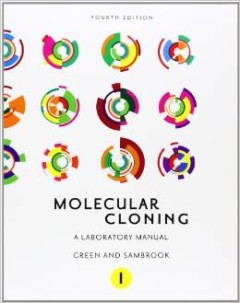
Molecular cloning : a laboratory manual
Molecular Cloning has served as the foundation of technical expertise in labs worldwide for 30 years. No other manual has been so popular, or so influential. Molecular Cloning, Fourth Edition, by the celebrated founding author Joe Sambrook and new co-author, the distinguished HHMI investigator Michael Green, preserves the highly praised detail and clarity of previous editions and includes speci…
- Edition
- 4th
- ISBN/ISSN
- 9781936113422
- Collation
- xxxiii, 630 p. : ill. : ind. ; 28 cm.
- Series Title
- -
- Call Number
- 572.8 Gre m
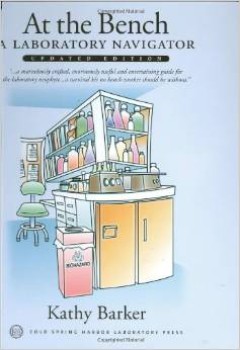
At the bench : a laboratory navigator
At the Bench is the unique and hugely successful handbook for living and working in the laboratory, an essential aid to understanding basic lab techniques and how research groups work at a human level. In this newly revised edition, chapters have been rewritten to accommodate the impact of computer technology and the Internet, not only on the acquisition and analysis of data, but also on its or…
- Edition
- Updated
- ISBN/ISSN
- 9780879697082
- Collation
- xiv, 465 p. : ill. : ind. ; 26 cm.
- Series Title
- -
- Call Number
- 610.78 Bar a

At the helm : leading your laboratory
This book has helped thousands of newly appointed principal investigators successfully transition to running their own labs. But changes in technology continue to transform the way science is done, affecting ways in which labs communicate and collaborate, organize data and supplies, and keep current on the latest developments. The culture of science has also evolved, as more scientists explore …
- Edition
- 2nd
- ISBN/ISSN
- 9780879698669
- Collation
- xii, 372 p. : ill. : ind. ; 26 cm.
- Series Title
- -
- Call Number
- 507.8 Bar a
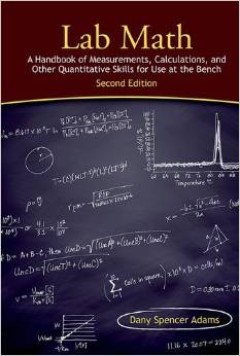
Lab math : a handbook of measurements, calculations, and other quantitative s…
Lab Math: A Handbook of Measurements, Calculations, and Other Quantitative Skills for Use at the Bench, 2nd edition, collects in one place the numbers and equations you rely on for your experiments and use to report your data-what they mean and how to use them-as well as easy-to-follow shortcuts for making the math easier. Written in an accessible and informal style, Lab Math describes basic ma…
- Edition
- 2nd
- ISBN/ISSN
- 9781936113712
- Collation
- xi, 332 p. : ind. ; 24 cm
- Series Title
- -
- Call Number
- 510 Ada l

Development of milk-based product
- Edition
- -
- ISBN/ISSN
- -
- Collation
- ix, 59 p. : ill. ; 28 cm.
- Series Title
- -
- Call Number
- 664 Ani d
- Edition
- -
- ISBN/ISSN
- -
- Collation
- ix, 59 p. : ill. ; 28 cm.
- Series Title
- -
- Call Number
- 664 Ani d

Internship at PT. Bio Farma
- Edition
- -
- ISBN/ISSN
- -
- Collation
- vii, 13 p. : ill. ; 28 cm.
- Series Title
- -
- Call Number
- 571.6381 Cin i
- Edition
- -
- ISBN/ISSN
- -
- Collation
- vii, 13 p. : ill. ; 28 cm.
- Series Title
- -
- Call Number
- 571.6381 Cin i
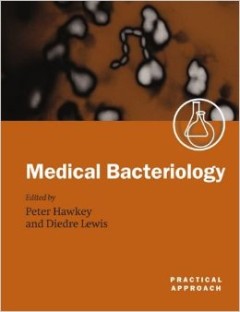
Medical bacteriology : a practical approach
The first edition of this book established itself as the most widely used, concise guide to procedures in clinical microbiology laboratories. Now that it has been extensively updated, the book represents a state-of-the-art training aid for the diagnostic microbiology laboratory. Invaluable to microbiologists preparing for higher professional examinations such as the American Board of Medical Mi…
- Edition
- -
- ISBN/ISSN
- 9780199637782
- Collation
- xxvi, 409 p. : ill. : ind. ; 26 cm.
- Series Title
- -
- Call Number
- 616.014 Med

Experimental immunology
- Edition
- 5th Edition
- ISBN/ISSN
- 0808728768
- Collation
- -
- Series Title
- -
- Call Number
- 616.7 Bur e
- Edition
- 5th Edition
- ISBN/ISSN
- 0808728768
- Collation
- -
- Series Title
- -
- Call Number
- 616.7 Bur e
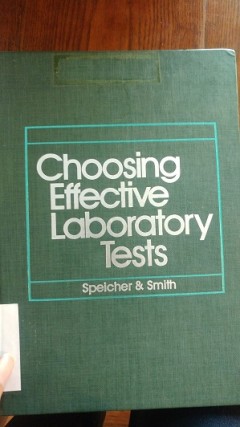
Choosing effective laboratory tests
- Edition
- -
- ISBN/ISSN
- 0721685331
- Collation
- x, 389 p. : ill. ; 27 cm.
- Series Title
- -
- Call Number
- 616.07 Spe c
- Edition
- -
- ISBN/ISSN
- 0721685331
- Collation
- x, 389 p. : ill. ; 27 cm.
- Series Title
- -
- Call Number
- 616.07 Spe c

Food pharmacology
- Edition
- -
- ISBN/ISSN
- -
- Collation
- xiii, 183 p. illus. 24 cm.
- Series Title
- -
- Call Number
- 615.9 Sap f
- Edition
- -
- ISBN/ISSN
- -
- Collation
- xiii, 183 p. illus. 24 cm.
- Series Title
- -
- Call Number
- 615.9 Sap f
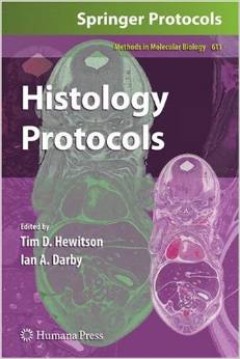
Histology protocols
Somuchofwhatweknowaboutthepathogenesisofhumandiseasehascomefromthe systematic and careful study of histological material. Indeed, every internal medicine discipline has its landmark papers describing the clinico-pathological correlations. However, increasingly, it is molecular and cellular biology that provides the necessary mechanistic insights. For many years, it was thought that the two skil…
- Edition
- -
- ISBN/ISSN
- 9781603273442
- Collation
- x, 229 p. : ill. : ind. ; 26 cm.
- Series Title
- -
- Call Number
- 611.01078 His
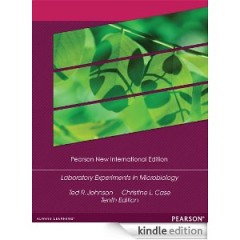
Laboratory experiments in microbiology
Containing 57 thoroughly class-tested and easily customizable exercises, Laboratory Experiments in Microbiology, Tenth Edition, provides engaging labs with instruction on performing basic microbiology techniques and applications for undergraduate students in diverse areas, including the biological sciences, allied health sciences, agriculture, environmental science, nutrition, pharmacy, and var…
- Edition
- 10th
- ISBN/ISSN
- 9781292027500
- Collation
- v, 490 p. : ill. : ind. ; 28 cm.
- Series Title
- -
- Call Number
- 576 Joh l

Microbiology : a laboratory manual
- Edition
- 10th
- ISBN/ISSN
- 9781292040394
- Collation
- vi, 566 p. : ill. : ind. ; 28 cm.
- Series Title
- -
- Call Number
- 576 Cap m
- Edition
- 10th
- ISBN/ISSN
- 9781292040394
- Collation
- vi, 566 p. : ill. : ind. ; 28 cm.
- Series Title
- -
- Call Number
- 576 Cap m
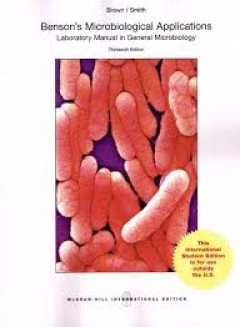
Benson's microbiological applications : laboratory manual in general microbio…
- Edition
- 13th
- ISBN/ISSN
- 9781259252167
- Collation
- 528 p. : ill. : ind. ; 28 cm.
- Series Title
- -
- Call Number
- 576 Bro b
- Edition
- 13th
- ISBN/ISSN
- 9781259252167
- Collation
- 528 p. : ill. : ind. ; 28 cm.
- Series Title
- -
- Call Number
- 576 Bro b
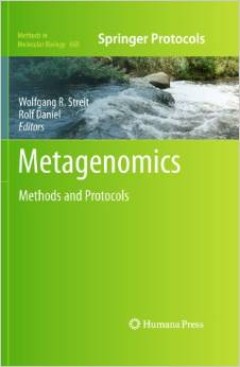
Metagenomics : methods and protocols
Metagenomics has proven to be a powerful tool for exploring the ecology, metabolic profiling, and comparison of complex microbial communities as well as its important applications in the mining of metagenomes for genes encoding novel biocatalysts and drug molecules for bioindustries. In Metagenomics: Methods and Protocols, expert researches provide an overview and introduction to basic methods …
- Edition
- -
- ISBN/ISSN
- 9781607618225
- Collation
- xi, 341 p. : ill. : ind. ; 27 cm.
- Series Title
- -
- Call Number
- 572.8629 Met

Techniques in molecular medicine : springer lab manual
This manual not only provides reliable, up-to-date protocols for lab use but also the theoretical background of molecular biology, allowing users to better understand the principles underlying these techniques. It covers a wide range of methods, including the purification of nucleic acids, enzymatic modification of DNA, isolation of specific DNA fragments, PCR, cloning techniques, and gene expr…
- Edition
- -
- ISBN/ISSN
- 9783642478086
- Collation
- xii, 387 p. : ill. : ind. ; 26 cm.
- Series Title
- -
- Call Number
- 572.8 Tec
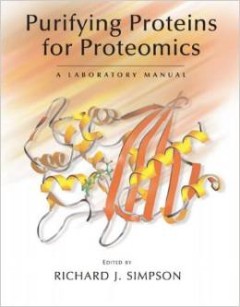
Purifying proteins for proteomics : a laboratory manual
This manual complements Simpson's Proteins and Proteomics manual, with a comprehensive collection of methods for protein purification from a variety of source preparations. The protocols are accompanied by extensive discussion of potential pitfalls and troubleshooting advice.
- Edition
- -
- ISBN/ISSN
- 9780879696962
- Collation
- xi, 801 p. : ill. : ind. ; 28 cm.
- Series Title
- -
- Call Number
- 572.6 Pur
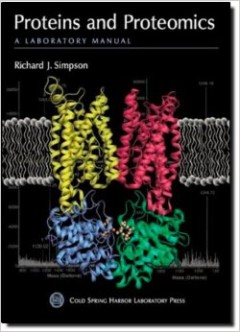
Proteins and proteomics : a laboratory manual
Completion of sequencing of the human genome, as well as those of many other organisms, has now opened the door for exploration of the proteome, the many thousands of interacting proteins in a given organism. Critical to tackling the complexity of the proteome is a workable strategy using reliable and tested protocols for identifying, isolating, and quantifying proteins in cells and cell pathwa…
- Edition
- -
- ISBN/ISSN
- 9780879695545
- Collation
- xiii, 926 p. : ill. : ind. ; 28 cm.
- Series Title
- -
- Call Number
- 572.6 Sim p
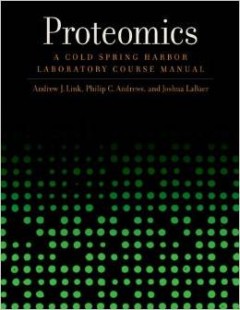
Proteomics : a cold spring harbor laboratory course manual
The book is very well presented, written in a logical and concise way, and unequivocally solid in terms of scientific content, with many ready-to-use, robust procedures tested and validated over the years by recognized experts. I warmly recommend this volume to anyone who wants to implement proteomics techniques in the laboratory, or who simply wishes to get a practical sense of these technique…
- Edition
- -
- ISBN/ISSN
- 9780879697877
- Collation
- viii, 228 p. : ill. : ind. ; 28 cm.
- Series Title
- -
- Call Number
- 572.6078 Lin p
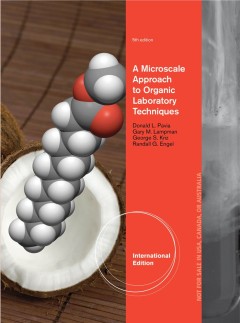
A microscale approach to organic laboratory techniques
In this laboratory textbook for students of organic chemistry, experiments are designed to utilize standard-scale (macroscale) glassware and equipment but with smaller amounts of chemicals and reagents. The textbook features a large number of traditional organic reactions and syntheses, as well as the isolation of natural products and experiments with a biological or health sciences focus. The …
- Edition
- 5th
- ISBN/ISSN
- 9781133107415
- Collation
- xix, 1015 p. : ill. : ind. ; 29 cm.
- Series Title
- -
- Call Number
- 547 Pav m

Green organic chemistry : strategies, tools, and laboratory experiments
Developing the green organic program at the University of Oregon, Kenneth Doxsee and James Hutchison saw the urgent need and rapidly growing demand for green chemistry laboratory materials. This lab text describes the tools and strategies of green chemistry, and the lab experiments that allow investigation of organic chemistry concepts and techniques in a greener laboratory setting. GREEN ORGAN…
- Edition
- -
- ISBN/ISSN
- 9780534388515
- Collation
- 244 p. : ill. : ind. ; 28 cm.
- Series Title
- -
- Call Number
- 547 Dox g
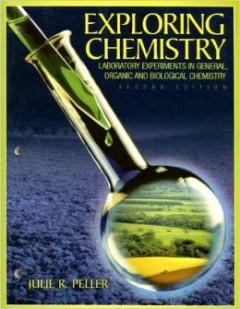
Exploring chemistry : laboratory experiments in general, organic, and biologi…
This lab manual is organized and written to make the experiments more applicable to users' daily lives. This approach also serves to make the experiments more understandable. New updated background information and additional figures and pictures provide clearer representations of concepts to facilitate learning. Many labs relate specifically to allied health fields. An experiment on Acid Rain a…
- Edition
- 2nd
- ISBN/ISSN
- 9780130477149
- Collation
- ix, 379 p. : ill. ; 28 cm.
- Series Title
- -
- Call Number
- 540.78 Pel e
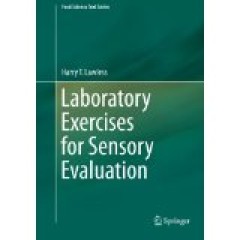
Laboratory exercises for sensory evaluation
"From the co-author of Sensory Evaluation of Foods, Principles and Practices, this lab manual is a fitting accompaniment to that text in an undergraduate or graduate course in sensory evaluation of foods. The manual includes introductory information, such as report formats (both academic and industrial), as well as a series of eleven full-length lab exercises suitable for a three-hour laborator…
- Edition
- -
- ISBN/ISSN
- 9781461456827
- Collation
- xv, 151 p. : ill. : ind. ; 26 cm.
- Series Title
- -
- Call Number
- 664.07 Law l
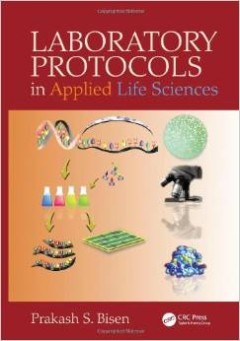
Laboratory protocols in applied life sciences
As applied life science progresses, becoming fully integrated into the biological, chemical, and engineering sciences, there is a growing need for expanding life sciences research techniques. Anticipating the demands of various life science disciplines, Laboratory Protocols in Applied Life Sciences explores this development. This book covers a wide spectrum of areas in the interdisciplinary …
- Edition
- -
- ISBN/ISSN
- 9781466553149
- Collation
- lxxxix, 1720 p. : ill. : ind. ; 26 cm.
- Series Title
- -
- Call Number
- 616.075 Bis l
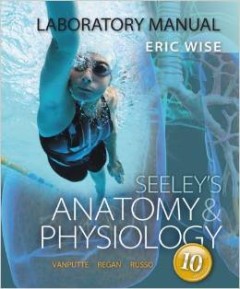
Laboratory manual seeley's anatomy and physiology
This manual was written to be used with Seeley’s Anatomy & Physiology, tenth edition, by VanPutte, Regan, and Russo. The illustrations are labeled: therefore, students do not need to bring their lecture text to lab. The lab manual accompanies the lecture text and lecture portion of the course and can be used in either a one-term or a full-year course. The illustrations are outstanding, and th…
- Edition
- 10th
- ISBN/ISSN
- 9780077421397
- Collation
- x, 546 p. : ill. : ind. ; 28 cm.
- Series Title
- -
- Call Number
- 612 Wis l
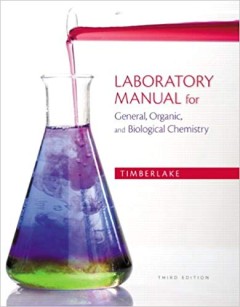
Laboratory manual for general, organic, and biological chemistry
The Laboratory Manual for General, Organic, and Biological Chemistry , third edition, by Karen C. Timberlake contains 35 experiments related to the content of general, organic, and biological chemistry courses, as well as basic/preparatory chemistry courses. The labs included give students an opportunity to go beyond the lectures and words in the textbook to experience the scientific process f…
- Edition
- 3rd edition
- ISBN/ISSN
- 9780321811851
- Collation
- xxv, 406 p. : ill. : ind. ; 28 cm.
- Series Title
- -
- Call Number
- 540 Tim l

Laboratory manual for principles of general chemistry
A lab manual for the General Chemistry course, Beran has been popular for the past nine editions because of its broad selection of experiments, clear layout, and design. Containing enough material for two or three terms, this lab manual emphasizes chemical principles as well as techniques. In addition, the manual helps students understand the timing and situations for various techniques.
- Edition
- 10th
- ISBN/ISSN
- 9781118621516
- Collation
- viii, 448 p. : ill. ; 28 cm
- Series Title
- -
- Call Number
- 542 Ber l
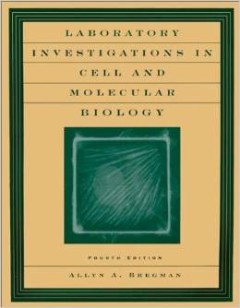
Laboratory investigations in cell and molecular biology
This cell biology workbook/lab text contains 21 projects, combining broad coverage with ease of use. Each project has detailed procedural steps, plus clearly written and thorough introductions for bench work that can be completed in a three-hour laboratory session. Lab procedures reflect current safety practices.
- Edition
- 4th
- ISBN/ISSN
- 9780471201335
- Collation
- v, 331 p. : ill. ; 28 cm.
- Series Title
- 71.6/078 Bre l
- Call Number
- 571.6/078 Bre l

Innovative food science and emerging technologies volume 45 February 2018
- Edition
- Volume 45 February 2018
- ISBN/ISSN
- 1466-8564
- Collation
- []
- Series Title
- -
- Call Number
- 664 Inn
- Edition
- Volume 45 February 2018
- ISBN/ISSN
- 1466-8564
- Collation
- []
- Series Title
- -
- Call Number
- 664 Inn

Shor Communication: Immunostimulatory Effect of tempoyak (fermented Durian) o…
- Edition
- -
- ISBN/ISSN
- 1412-033X
- Collation
- []
- Series Title
- -
- Call Number
- 613.2 Sus s
- Edition
- -
- ISBN/ISSN
- 1412-033X
- Collation
- []
- Series Title
- -
- Call Number
- 613.2 Sus s

Protein NMR spectroscopy : principles and practice
Protein NMR Spectroscopy combines a comprehensive theoretical treatment of NMR spectroscopy with an extensive exposition of the experimental techniques applicable to proteins and other biological macromolecules in solution. Beginning with simple theoretical models and experimental techniques, Protein NMR Spectroscopy develops the complete repertoire of theoretical principles and experimental te…
- Edition
- -
- ISBN/ISSN
- 9780121644918
- Collation
- xxv, 885 p. : ill. : ind. ; 24 cm.
- Series Title
- -
- Call Number
- 543.5 Cav p
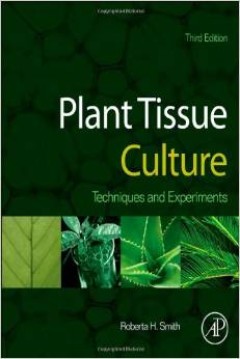
Plant tissue culture : techniques and experiments
Plant Tissue Culture, Third Edition builds on the classroom tested, audience proven manual that has guided users through successful plant culturing A.tumefaciens mediated transformation, infusion technology, the latest information on media components and preparation, and regeneration and morphogenesis along with new exercises and diagrams provide current information and examples. The include…
- Edition
- 3rd edition
- ISBN/ISSN
- 9780124159204
- Collation
- xvii, 171 p. : ill. : ind. ; 24 cm.
- Series Title
- -
- Call Number
- 581.0724 Smi p
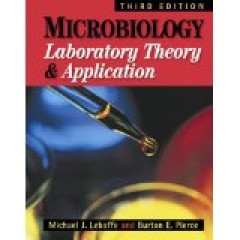
Microbiology : laboratory theory and application
This full-color laboratory manual is designed for major and non-major students taking an introductory level microbiology lab course. Whether your course caters to pre-health professional students, microbiology majors or pre-med students, everything they need for a thorough introduction to the subject of microbiology is right here. 3-hole drilled.
- Edition
- 3rd edition
- ISBN/ISSN
- 9780895828309
- Collation
- xii, 772 p. : ill. : ind. ; 28 cm.
- Series Title
- -
- Call Number
- 579.022 Leb m
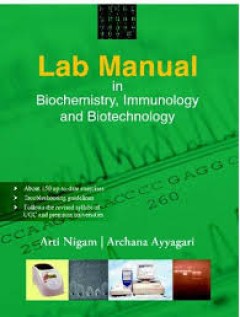
Lab manual in biochemistry, immunology and biotechnology
Lab Manual is intended to be a handy reference for undergraduate and postgraduate students in life science and allied fields. The book covers fundamentals exercises as well as advanced protocols, along with authentic explanation of various techniques and precautions pertaining to common errors in the laboratory.
- Edition
- -
- ISBN/ISSN
- 9780070617674
- Collation
- xxix, 366 p. : ill. ; 24 cm.
- Series Title
- -
- Call Number
- 574.19072 Nig l
 Computer Science, Information & General Works
Computer Science, Information & General Works  Philosophy & Psychology
Philosophy & Psychology  Religion
Religion  Social Sciences
Social Sciences  Language
Language  Pure Science
Pure Science  Applied Sciences
Applied Sciences  Art & Recreation
Art & Recreation  Literature
Literature  History & Geography
History & Geography